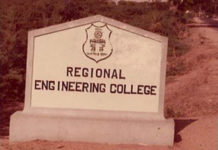Flying in Airplanes is pretty common, but what if we said you that we’d be soon flying in rockets?
What if we said that the longest distances on earth that take days to be covered even by flight can be traversed in less than an hour?
Something like this has been introduced by Elon Musk; the founder, CEO, and CTO of SpaceX.
“It’s just after sunrise in New York City. The sky is bathed in pinks and orange as people walk along a long dock toward a white ship. They board the vessel and it sails out to a launchpad further out in the water, where a spaceship strapped to a giant rocket awaits. After they pile in, the rocket blasts off into the atmosphere. About 39 minutes later, they land halfway around the world, in Shanghai.”
This is the scenario imagined by Musk, who discussed the futurist transport system in a speech in Australia last week about the company’s long-term ambitions. The not-yet-built system—which Musk nicknamed BFR, for “big fucking rocket”—would, someday, ferry passengers from one major city to another. Long-distance trips from Bangkok to Dubai, or from Honolulu to Tokyo, for example, would take about 30 minutes and cost about as much as an economy airline ticket.
YES, you read that right, though we have no idea how they’d make Rocket transportation so cheap, keeping in mind it’s high budget requirements.
The BFR would also subsume the duties of SpaceX’s current fleet of rockets and spacecraft, like the Falcon 9 and Dragon capsule, by launching satellites into orbit, transporting astronauts and cargo to the International Space Station, and even bringing humans to the moon and Mars.
To make a half-hour trip, the BFR would have to travel thousands of miles per hour, with a maximum speed of about 16,700 miles per hour, according to SpaceX. The flight would expose passengers to sensations they don’t usually encounter while travelling, like intense gravitational forces and weightlessness. Which The spaceship would definitely need to stock barf bags.
Musk explained in a tweet that travellers would experience g-forces between 2 and 3, which means twice or three times their body weight. “Will feel like a mild to moderate amusement park ride on ascent and then smooth, peaceful, and silent in zero gravity for most of the trip until landing,” he said.
The ride will be most intense during landing and takeoff. The rapid acceleration and deceleration could lead to motion sickness. And so could a quick peek out the window during a particularly twisty manoeuvre, for there’s a disconnect between the g-force and what the person sees, which can lead to severe motion sickness.
It would be very uncomfortable and also would cause people to throw up during the flight; it’s just something the human body would find difficult to cope-up with.
“That may not be a very comfortable way to travel; On Earth, aeroplanes are way more efficient. Not everyone can take it” said Ge-Cheng Zha, a mechanical and aerospace professor at the University of Miami who studies supersonic flight.
However apart from the discomfort it would cause, there are other things that could be huge question marks hindering the success rate of the project, like the loading and unloading of luggage; the seating and getting off of passengers. The flight would take a few minutes; but these processes could possibly take hours. There’s also the question of fuel. Launching the BFR, which will stand 106 meters tall, will require tremendous energy. A rocket is much harder to get off the ground than, say, a supersonic plane.
The Concorde, a now-retired commercial supersonic airliner that carried passengers from New York to London in under three hours, among other destinations, used about three times as much fuel as a Boeing 747. This makes it beyond imagination to comprehend the amount of fuel this mode of transportation would require on a commercial basis. This is both highly non-eco-friendly as well as not-pocket-friendly; even though it’s been claimed that it will be as cheap as an economy airlines ticket.
Still, many won’t be deterred. The BFR doesn’t exist yet, so the coolness factor outweighs all others. Let’s wait and see what comes out of this plan; for Musk has already stated that production of The BFR would begin in six to nine months.
Whatever comes out of this, right now it’s something we’d impatiently look forward to and if it’s a success, it will revolutionize our conventional transportation methods, and hence our lives.
We need visionaries to motivate us as a society, and Musk happens to be one who always comes up with something really inspiring and incredible for the crowd.
You can check out the YouTube video titled “BFR | Earth to Earth” for a proper idea.
Author: Haneen Idrees Ahmed





